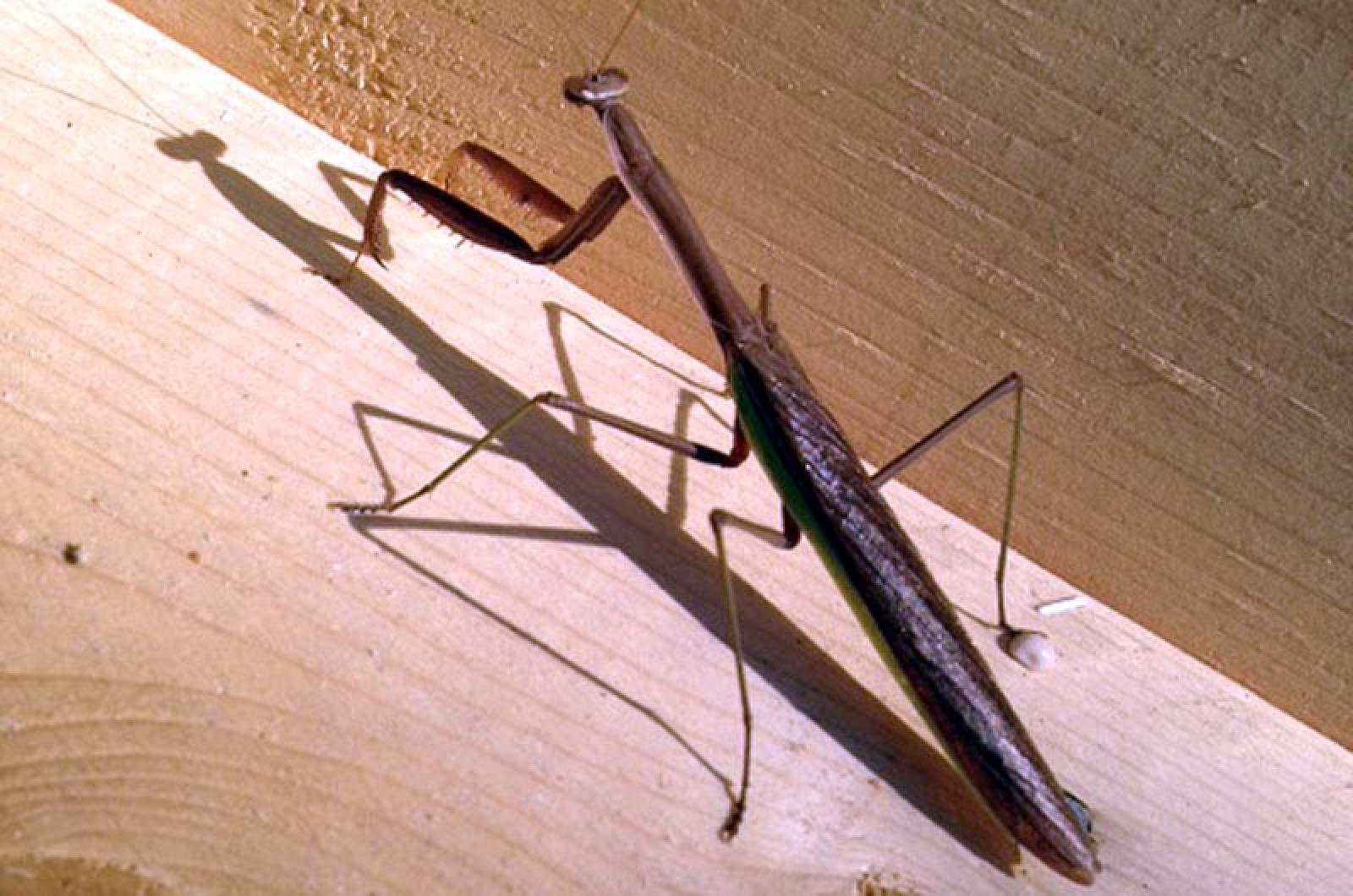The Hungry Caterpillar has got nothing on a praying mantis.
Though Eric Carle’s ravenous caterpillar plowed through a meal of an apple, two pears, three plums, four strawberries, five oranges, a piece of chocolate cake, an ice cream cone, a pickle, a slice of Swiss cheese, a slice of salami, a lollipop, a piece of cherry pie, a sausage, a cupcake, a slice of watermelon and a green leaf, its legendary consumption was completely fictitious.
Praying mantises, on the other hand, have an appetite that is both extraordinary and true to life. Some caterpillars, like those of the monarch butterflies, eat only one (or in the case of other species, a very limited) variety of plants. Praying mantises consume both an interesting assortment and large quantity of food.
Insects are the most common prey species for this praying predator, though they have also been known to consume mice, frogs, small turtles, newts and even hummingbirds. One study showed that 16 crickets per day were eaten by a single praying mantis! Moths, crickets, flies, grasshoppers and other insects are all on the menu, as are the mantis’s own siblings when it is a nymph, and later, as an adult, its mate.
Females are famous for their cannibalistic consumption of their partner both during and after their sexual pairing. American entomologist Leland Ossian Howard described one such tryst in 1886, “Placing them in the same jar, the male, in alarm, endeavored to escape. In a few minutes the female succeeded in grasping him. She first bit off his front tarsus, and consumed the tibia and femur. Next she gnawed out his left eye . . . it seems to be only by accident that a male ever escapes alive from the embraces of his partner.”
Some research, however, suggests that munching while mating may not be quite as common as previously thought. While laboratory experiments demonstrate this tendency, in the wild this type of cannibalism seems to happen less often. In one study, cannibalism during mating occurred only in 5 to 31 per cent of the time, and these copulating couples remained in coitus for up to six hours.
It is now, during the late summer and early fall, that reproduction is occurring — multiple sightings have been reported recently of these interesting insects. After mating, the female will lay eggs and encase them in a Styrofoam-like frothy coating to overwinter. Next spring, mini mantises will emerge from those eggs.
The survivors of the brood (those not eaten by their brothers and sisters) will grow into the impressive creatures that are so easily identifiable and worthily endowed. Praying mantises can brag about the raptorial graspers on their front legs that allow them to catch and hold prey, their five eyes that permit them to see color and distances to 60 feet, superb camouflage ability, and an elongated thorax that acts as an extended neck and facilitates a field of vision of nearly 180 degrees!
Where they lack talent is in the hearing department. Praying mantises have only one ear and cannot distinguish the direction of a sound or its frequency. Strangely, though, these insects can detect ultrasound, and are good at avoiding bats that are using their echolocation skills to make a meal of those mantises.
This extra line of defense is crucial in the mantis’s world, for as we all know, the hunter can just as easily be the hunted. As an anonymous quote illuminates, “The mantis stalks the cicada, unaware of the oriole lurking behind it.”
Suzan Bellincampi is director of the Felix Neck Wildlife Sanctuary in Edgartown, and author of Martha’s Vineyard: A Field Guide to Island Nature.




Comments
Comment policy »